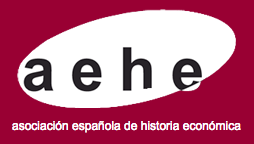Inter-firm relationships and interlocking directorates in twentieth century Spanish banking
DOI:
https://doi.org/10.1016/S1698-6989(06)70270-3Keywords:
Monopolization strategies, Interlocking directorates, Spanish banking, 20th Century. JEL Codes, L12, L14, N24Abstract
Spanish banking historiography asserts that the largest banks performed over the twentieth century as though they constituted a monopoly. One of its main coordination schemes would have been a network of interlocking bank directors that would include most of the financial firms. Evidence available for the 1920s and 1960s seems to confirm the veracity of this hypothesis. In this paper, more systematic evidence has been collected to cover the whole twentieth century. The aim is to check whether these networks have persisted over the entire alleged period or they are by-products of particular events. Our results show that no general network remained for more than a decade. Therefore, it should be dismissed that interlocking directorates worked as coordination device of the so-called banking cartel. A summary review of the literature about the history of Spanish banks reveals that other possibilities are feasible.Downloads
Downloads
How to Cite
Issue
Section
License
Aquellos autores/as que tengan publicaciones con esta revista, aceptan los términos siguientes
- Los autores/as conservarán sus derechos de autor y garantizarán a la revista el derecho de primera publicación de su obra, el cuál estará simultáneamente sujeto a la Licencia de reconocimiento de Creative Commons Reconocimiento-No comercial-Sin obra derivada 4.0 Internacional que permite a terceros compartir la obra siempre que se indique su autor y su primera publicación esta revista, y no permite hacer uso comercial de la misma ni tampoco obras derivadas.
- Los autores/as podrán adoptar otros acuerdos de licencia no exclusiva de distribución de la versión de la obra publicada (p. ej.: depositarla en un archivo telemático institucional o publicarla en un volumen monográfico) siempre que se indique la publicación inicial en esta revista.
Plagio y fraude científico
La publicación de un trabajo que atente contra los derechos de propiedad intelectual será responsabilidad de los autores/as, que serán los que asuman los conflictos que pudieran tener lugar por razones de derechos de autor. Los conflictos más importantes pueden darse por la comisión de plagios y fraudes científicos.
Se entiende por plagio:
- Presentar el trabajo ajeno como propio.
- Adoptar palabras o ideas de otros autores sin el debido reconocimiento.
- No emplear las comillas u otro formato distintivo en una cita literal.
- Dar información incorrecta sobre la verdadera fuente de una cita.
- El parafraseo de una fuente sin mencionar la fuente.
- El parafraseo abusivo, incluso si se menciona la fuente.
Las prácticas constitutivas de fraude científico son las siguientes:
- Fabricación, falsificación u omisión de datos y plagio.
- Publicación duplicada.
- Conflictos de autoría.





